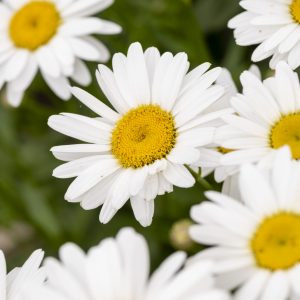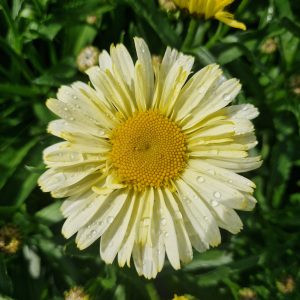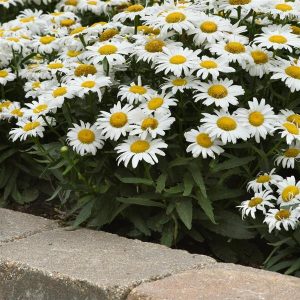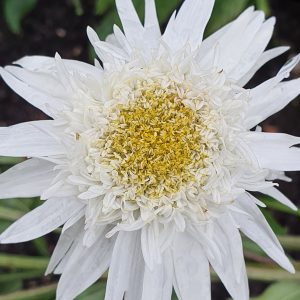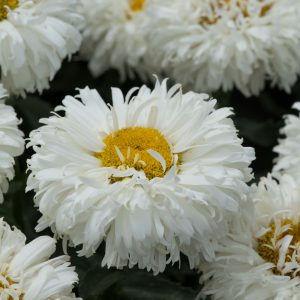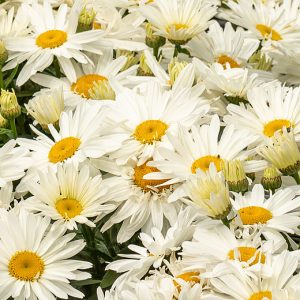Leucanthemum, commonly known as Shasta Daisy, is a delightful and easy-to-grow perennial that adds a touch of classic charm to gardens. Follow this comprehensive planting guide for successful cultivation and the flourishing of your Leucanthemum plants.
Site Selection
Sunlight: Plant Leucanthemum in a location with full sunlight. These plants thrive in at least 6-8 hours of direct sunlight daily.
Soil Type: Choose well-draining soil with a slightly acidic to neutral pH. Leucanthemum is adaptable to various soil types but prefers soil that doesn’t stay waterlogged.
Planting Time
Spring or Autumn Planting: Optimal planting times are in spring after the last frost or in autumn, allowing the plant to establish before extreme temperatures.
Planting Process
Digging the Hole: Dig a hole slightly larger than the root ball of the plant. Ensure the crown (where the roots meet the stems) is level with the soil surface.
Spacing: Plant Leucanthemum with adequate spacing, usually 18-24 inches apart, to promote air circulation and prevent overcrowding.
Watering
Initial Watering: Water the plant thoroughly after planting to help settle the soil. Provide consistent moisture during the first few weeks until the plant establishes itself.
Regular Watering: Once established, water consistently, allowing the soil to dry slightly between waterings. Avoid waterlogged conditions, as Leucanthemum prefers well-drained soil.
Mulching
Mulch Application: Apply a layer of organic mulch around the plant to conserve soil moisture, suppress weeds, and regulate soil temperature.
Fertilisation
Balanced Fertiliser: Leucanthemum generally doesn’t require heavy feeding. Apply a balanced, all-purpose fertiliser in early spring as new growth emerges.
Pruning
Deadheading: Deadhead spent flowers regularly to encourage continuous blooming. Prune back the entire plant after the first flush of blooms to encourage a more compact shape.
Support
Staking: Provide support for tall varieties if needed. Staking can prevent plants from flopping over, especially during heavy rainfall or windy conditions.
Winter Care
Mulching for Winter: Apply a layer of mulch around the base of the plant in late autumn to protect the roots during winter. Mulching is especially important in colder climates.
Container Planting
Well-Draining Containers: If planting in containers, use pots with drainage holes and a well-draining potting mix. Ensure the container is large enough to accommodate the plant’s growth.
Pests and Diseases
Monitoring: Keep an eye out for pests like aphids or leafhoppers. Treat any infestations promptly with insecticidal soap or neem oil.
Enjoy the Blooms
Blooming Period: Leucanthemum typically blooms from late spring through summer. Enjoy the cheerful, daisy-like flowers in your garden or as cut flowers in arrangements.
By following these planting guidelines, you’ll create an ideal environment for your Leucanthemum plants to thrive. Customise care based on your local conditions and the specific variety you’ve chosen.



